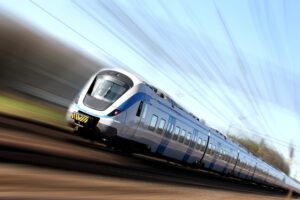
Hilton has entered into a franchise agreement with Gefest Group (the real estate developer, Odessa) on the implementation of a hotel project in Odessa, which is scheduled to open in the spring of 2025. According to a press release of Hilton, the hotel near the Arcadia entertainment area will be managed by Cyprus-based Millennium Hospitality. The new hotel will become part of the Hilton Hotels & Resorts chain.“There is clear opportunity for growth in Ukraine, with two hotels set to join our portfolio alongside Hilton Kyiv. Growing international interest in Odessa and robust domestic demand make Hilton Odessa an important addition to our European pipeline. We are pleased to be working with Gefest Group to introduce our flagship brand to southern Ukraine,” Senior Vice President for Development at Hilton Europe, the Middle East and Africa Patrick Fitzgibbon was quoted in the report. According to the report, the project provides for the construction of two buildings in Vanny and Primorsky lanes in Odesa. The hotel will have 145 rooms. The hotel infrastructure will include two swimming pools, one of which is panoramic, four restaurants and bars, a conference center (800 square meters), a banquet hall (300 square meters), a rooftop lounge area, and a spa center (600 square meters). Gefest Group was founded in Odessa in 1997. The company’s portfolio includes more than 40 office, retail and residential real estate projects in Ukraine and Europe at different stages of implementation.
National bank of Ukraine’s official rates as of 09/11/21

Source: National Bank of Ukraine

The European Union has announced a decision by which it excluded Ukraine from the list of countries for which it is recommended to lift the restrictive measures imposed on unnecessary travel to the EU due to coronavirus (COVID-19) pandemic.
“Following consideration under the recommendation to gradually remove temporary restrictions on non-essential travel to the EU, the Council has updated the list of countries, special administrative regions and other entities and territorial authorities for which travel restrictions should be lifted. In particular, Singapore has been removed from the list and Ukraine,” according to the decision made public on Tuesday.
At the same time, each EU member state has the right to decide “to remove temporary restrictions on non-essential travel to the EU for fully vaccinated travelers.”
As stipulated in the Council’s recommendation, this list will continue to be reviewed every two weeks and updated as appropriate.
The decision was made due to the growth of COVID-19 disease.
Ukraine was included in the list, which is reviewed every two weeks, on July 15.

Ukraine and Poland are planning to launch high-speed trains between the capitals.
“Recently I’ve been to Poland, talked with my counterpart in the Polish government. They support our idea, they are interested in it. They have also figured out that high-speed trains of 300 km+ are super-expensive and definitely not about economy. But as for 250 km+, we completely coincide with them in technical requirements, and now our teams are already starting to work. That is, we have agreements that our Italian company, which is developing a feasibility study, will work with the two railways,” Minister of Infrastructure of Ukraine Oleksandr Kubrakov said during the Big Construction: New Railway forum in Kyiv.
He also stressed that a preliminary understanding of the cost of the project and its roadmap is expected by the end of the year or in January 2022.
For this project, according to Kubrakov, a preliminary feasibility study is already being developed.